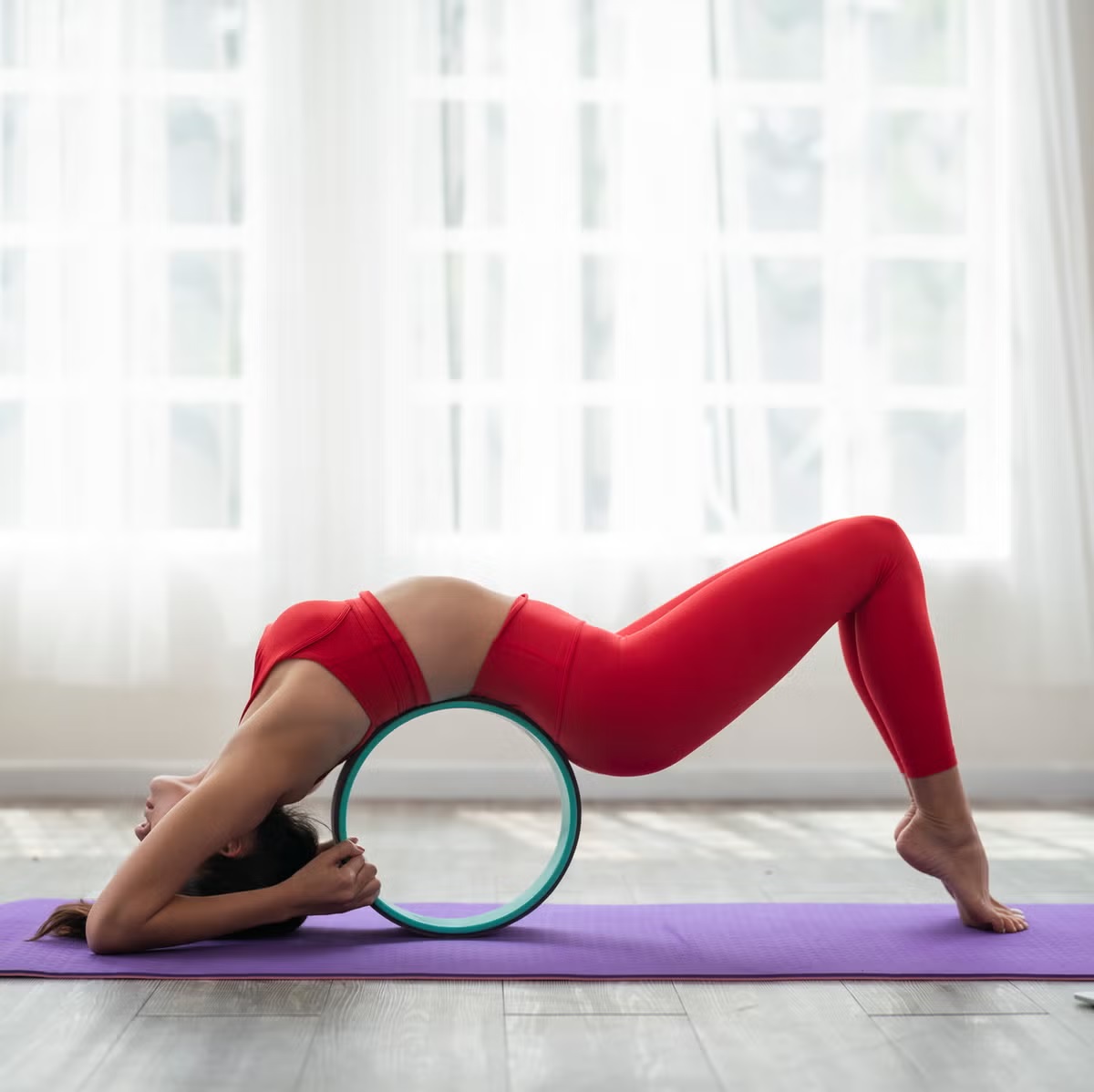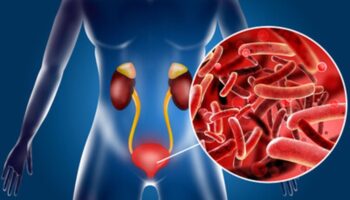In a fast-paced city like Singapore, long working hours, stress, and the constant use of digital devices have created a generation struggling with tight muscles and poor posture. The back, neck, and shoulders bear the brunt of this sedentary lifestyle, often leading to stiffness and discomfort. Among the many modern tools for self-care, the yoga wheel has emerged as a simple yet transformative prop that supports muscle recovery and deep release through a technique known as myofascial release.
Understanding Myofascial Release and Its Importance
To appreciate how the yoga wheel contributes to body wellness, it’s essential to understand what myofascial release means. Fascia is a thin connective tissue that surrounds every muscle, bone, and organ. When we sit for prolonged periods, the fascia tightens, causing tension and restricting movement. Myofascial release helps loosen these tight spots, promoting better mobility and reducing pain.
In yoga, props are often used to make poses more accessible or deepen stretches. The yoga wheel, however, adds a rolling element that applies gentle pressure to muscles, similar to a deep tissue massage. This combination of stretch and pressure makes it an effective way to release muscle tightness without external assistance.
Why Singapore’s Sedentary Lifestyle Demands Fascia Care
With the prevalence of desk-bound jobs and long hours spent in front of screens, it’s no surprise that many Singaporeans experience tension-related issues. Chronic sitting compresses the spine, tightens the hip flexors, and rounds the shoulders forward. The result is poor posture and muscle imbalances.
Common complaints include:
-
Tightness in the upper back and shoulders
-
Neck pain and tension headaches
-
Lower back discomfort from weak core support
-
Limited hip flexibility and hamstring stiffness
Using the yoga wheel consistently can counteract these issues by opening up tight areas, improving posture, and allowing the body to reset naturally.
How the Yoga Wheel Works for Myofascial Release
The cylindrical design of the yoga wheel allows it to roll smoothly along the spine and other muscle groups, applying targeted pressure. This controlled pressure releases adhesions in the fascia and stimulates blood flow. When used correctly, the wheel promotes recovery and relaxation at the same time.
The process involves:
- Gentle Pressure Application – Rolling slowly on the wheel activates pressure points similar to acupressure or massage therapy.
- Stretch and Release – As the body opens over the wheel, tight areas of the fascia are stretched, helping to lengthen the muscles.
- Improved Circulation – The pressure encourages oxygenated blood flow to the muscles, speeding up recovery and reducing soreness.
- Neuromuscular Relaxation – The body learns to relax under controlled stress, which enhances mind-body awareness.
Techniques for Upper Back and Shoulder Relief
Office workers often develop rounded shoulders and tight chest muscles due to slouching. The yoga wheel can reverse this pattern through heart-opening poses that gently stretch the chest and strengthen the upper back.
Suggested sequence:
-
Wheel-assisted Chest Opener: Sit with the wheel against your lower back, then lean back slowly, extending your arms overhead. This encourages a gentle arch, lengthening the front body.
-
Supported Fish Pose: Lie on the wheel with it placed between your shoulder blades. Breathe deeply as the chest expands and the shoulders drop back.
-
Rolling Shoulder Release: Position the wheel under one shoulder and roll gently to release built-up knots.
These movements open the thoracic spine, improving lung capacity and posture, while releasing tightness that accumulates from hours of typing or looking down at devices.
Relieving Lower Back Tension
Lower back pain is one of the most common concerns in Singapore’s working population. The yoga wheel can help decompress the spine and relieve pressure from prolonged sitting.
Lower back sequence:
-
Wheel Roll-Outs: Kneel on the mat, place your hands on the wheel, and roll it forward while keeping your spine long. This movement stretches the lower back and hips.
-
Supported Bridge Pose: Lie on your back with the wheel under your sacrum. Lift the hips slightly and let gravity release tension from the lumbar area.
-
Seated Forward Roll: Sit upright, place the wheel in front, and roll it forward to create traction along the spine.
Practising these stretches regularly not only eases discomfort but also helps strengthen the core muscles that stabilise the lower back.
Opening Tight Hips and Hamstrings
Urban living often leads to tight hip flexors and hamstrings due to limited movement throughout the day. Incorporating the yoga wheel into your practice can help release these areas.
Effective poses include:
-
Wheel-Assisted Lizard Pose: Use the wheel to support your front thigh while stretching the hip flexor deeply.
-
Hamstring Roller Stretch: Place the wheel under one leg and roll slowly from the knee to the glutes.
-
Supported Half Split: Position the wheel under your front heel for a controlled hamstring stretch that encourages lengthening without strain.
When performed consistently, these movements enhance flexibility, reduce injury risk, and promote balanced mobility.
Enhancing Mental Relaxation through Myofascial Release
While the yoga wheel provides physical benefits, it also aids mental relaxation. The slow, mindful rolling encourages deep breathing and present-moment awareness. This makes it an excellent tool for stress relief, complementing meditation and restorative yoga practices.
Regular use before or after work can serve as a self-care ritual that balances both mind and body. The repetitive rolling motions trigger relaxation responses in the nervous system, reducing anxiety and improving sleep quality.
Integrating the Yoga Wheel into Daily Routines
For maximum benefit, short, consistent sessions are better than occasional long practices. You can integrate the yoga wheel into your lifestyle easily:
-
Morning Routine: Roll the spine for five minutes to wake up the body.
-
Midday Stretch: Use it to counteract the effects of sitting by opening the chest and lengthening the front body.
-
Evening Recovery: Spend a few minutes rolling the back and legs to release the day’s tension.
Those who attend classes at Yoga Edition often combine the wheel with breathwork, restorative poses, and mindful stretching to maintain mobility and reduce daily stress.
Safety Tips and Considerations
Although the yoga wheel is user-friendly, proper technique is important. Here are a few safety points to keep in mind:
-
Start slowly, especially if you have a sensitive back or limited flexibility.
-
Keep movements controlled and avoid jerky rolling.
-
Use a padded yoga mat to prevent slipping.
-
Never force your body into deep stretches.
-
Consult a qualified instructor if you’re new to wheel practice or recovering from an injury.
A mindful approach ensures that you experience release without discomfort or strain.
Practical Benefits You’ll Notice Over Time
With regular use, the body begins to realign naturally. Some of the long-term improvements include:
-
Reduced stiffness and muscle soreness
-
Better posture and spinal alignment
-
Enhanced flexibility in the shoulders and hips
-
Decreased tension headaches
-
Greater body awareness and relaxation
These results are particularly valuable for working professionals in Singapore who face the daily challenge of balancing productivity with physical well-being.
FAQs
Q1. Can beginners use the yoga wheel for myofascial release?
Yes, beginners can safely use it by starting with gentle rolling on the upper back and avoiding extreme backbends. The wheel offers support, not strain, when used gradually.
Q2. How often should I practise with the yoga wheel?
Three to four times a week is ideal. Consistency matters more than intensity. Even short sessions can bring lasting relief from stiffness.
Q3. Is it safe for people with back injuries?
Those with chronic pain or spinal injuries should consult a physiotherapist or yoga therapist before using the wheel. Once approved, it can be integrated carefully for rehabilitation.
Q4. What makes myofascial release with the wheel different from foam rolling?
The yoga wheel offers a broader surface that follows the body’s curves, allowing deeper and more even pressure, especially along the spine, compared to traditional foam rollers.
Q5. Can I use the yoga wheel for relaxation or stress relief?
Absolutely. Gentle rolling while focusing on slow breathing can calm the nervous system, helping you unwind after a long day.
Q6. What’s the best time of day to use it?
Morning use energises the body and improves posture awareness, while evening sessions release accumulated tension. The ideal time depends on your lifestyle and goals.
Using the yoga wheel for myofascial release offers a practical and accessible way to combat the effects of modern living. Whether you’re addressing posture issues, muscle soreness, or stress, this prop transforms ordinary stretching into a therapeutic experience that brings both physical and mental balance.






